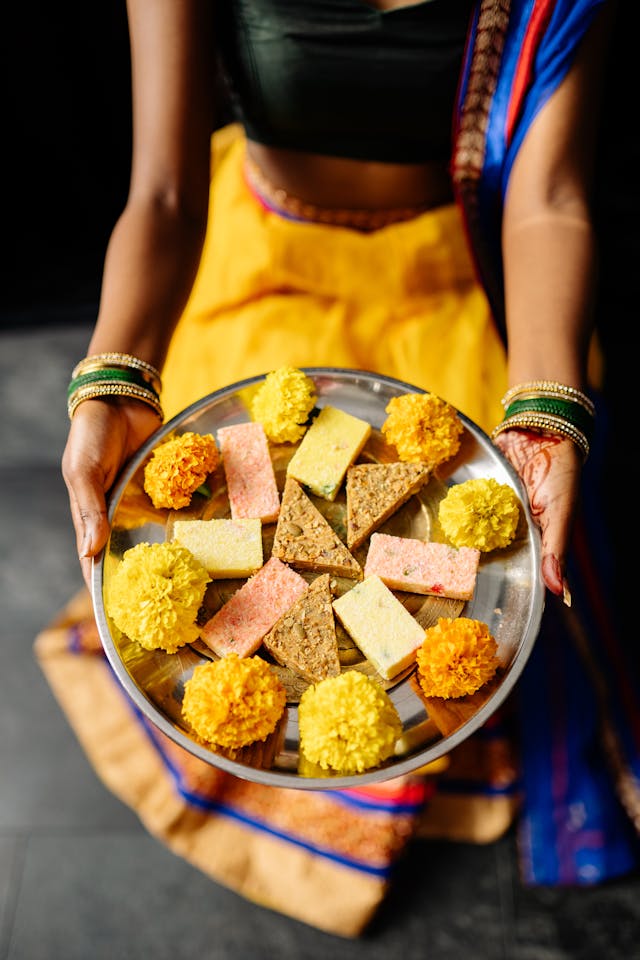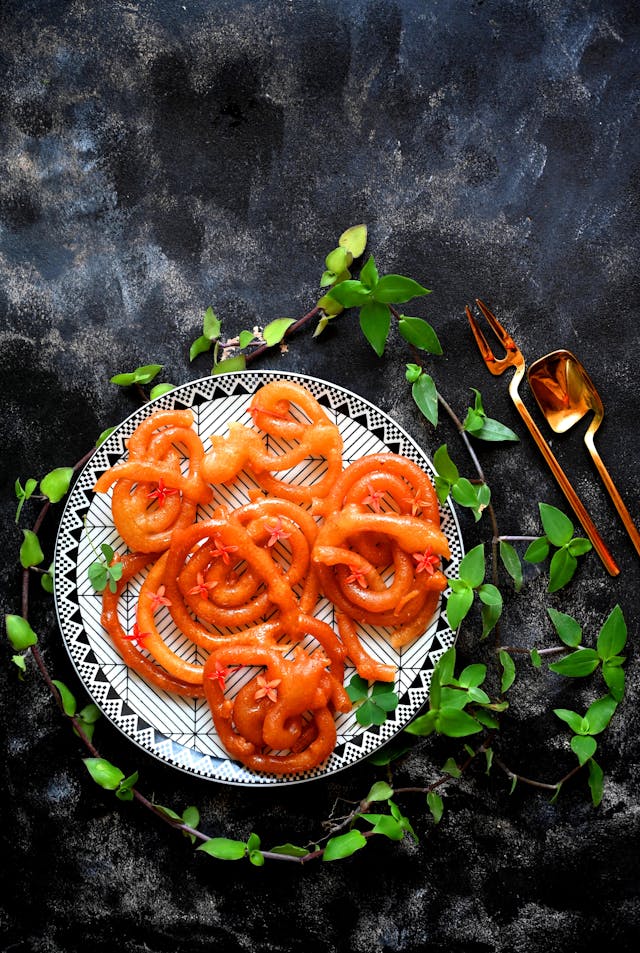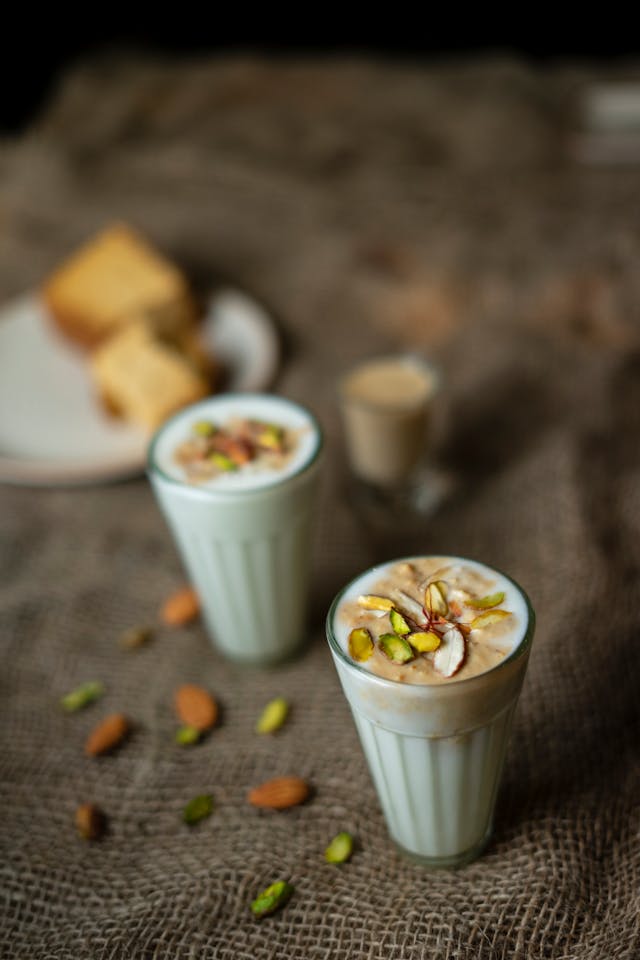In conversation with Chef Absar Malick, Executive Chef, Doubletree by Hilton Resort & Spa Marjan Island
What childhood memories do you have when it comes to mithais?
Mithai has always been more than just a treat for me—it represents warmth, celebration, and comfort. Growing up, mithai was essential to family gatherings, festivals, and even simple daily routines. I fondly remember the excitement of visiting sweet shops with my family, where the colorful display of sweets was nothing short of mesmerizing. Whether it was sharing a box of laddoos during Diwali or receiving a tray of sweets from visiting relatives, mithai was woven into the fabric of my childhood. Even today, the habit of ending the day with a small piece of mithai has become a ritual, reminding me of those cherished moments of joy and tradition.
Your favorite mithai, and why?
While there are countless delicious mithais, Milk Cake and Jalebi hold a special place in my heart. With its rich, dense texture and creamy sweetness, Milk Cake brings comfort and indulgence. It’s a simple yet satisfying sweet that I’ve always associated with home and family. On the other hand, Jalebi offers an entirely different experience. The contrast of its crispy exterior with the sweet, syrup-soaked inside creates a delightful burst of flavor and texture in every bite. Jalebi is festive and celebratory, often enjoyed during holidays or special occasions, symbolizing joy and togetherness.
Indian mithais offer an extraordinary range of options. They can be syrupy, crumbly, creamy, or crunchy, appealing to various preferences. Additionally, Indian sweets often carry cultural and religious significance, central to festivals, rituals, and family celebrations. The artistry in their preparation, often passed down through generations, makes them more than just desserts—they are symbols of heritage, celebration, and emotion.
Could you share a recipe for a mithai, either for festive occasions or otherwise?
One of the most beloved combinations in Indian cuisine is Jalebi, served with Rabri. Jalebi, a crispy, spiral-shaped sweet soaked in sugar syrup, is a favorite across India. Paired with Rabri—a thick, creamy dessert made from slow-cooked milk—this combination is a crowd-pleaser, perfect for festive occasions. To make Jalebi, a batter of flour and yogurt is fermented and then deep-fried in ghee, creating its signature crispy texture. The fried jalebis are immediately soaked in a cardamom-infused sugar syrup. Meanwhile, the Rabri is prepared by simmering full-fat milk on low heat until it thickens and is enriched with saffron, cardamom, and nuts. This pairing of crispy, sweet jalebi with the rich creaminess of Rabri creates a harmonious balance of flavors that elevates any celebration.

Why do Indian sweets win over any other desserts globally?
Indian sweets are unparalleled in their variety, complexity, and depth of flavor. What sets them apart on the global stage is their diversity. Each region of India boasts its unique array of mithais, from Bengali Rasgulla and Sandesh to Rajasthani Ghevar and South Indian Mysore pak. Indian sweets are not limited to a single flavor profile but explore an entire spectrum of tastes and textures, incorporating spices like cardamom, saffron, and nutmeg and ingredients like ghee, nuts, fruits, and lentils. Unlike many global desserts that focus heavily on chocolate or cream-based confections, Indian mithais offer an extraordinary range of options. They can be syrupy, crumbly, creamy, or crunchy, appealing to various preferences. Additionally, Indian sweets often carry cultural and religious significance, central to festivals, rituals, and family celebrations. The artistry in their preparation, often passed down through generations, makes them more than just desserts—they are symbols of heritage, celebration, and emotion.
These days, customers are asking for healthy mithai options. Doing so may alter the flavor, which means it’s not authentic in taste. What’s your take on this?
The demand for healthier mithai options reflects a growing awareness of health and wellness trends but also presents a challenge. Traditionally, mithai celebrates indulgence—made with rich ingredients like ghee, sugar, and full-fat dairy. These components contribute to the signature taste and texture that people love. While there are now sugar-free or low-calorie versions of mithai, I believe the authentic taste and experience are difficult to replicate fully. Mithai is not just about satisfying a sweet tooth but about savoring the richness of tradition and culture. That said, I acknowledge the importance of evolving with the times, and healthier versions of mithai can cater to those who wish to enjoy these sweets without compromising their health goals. However, for those seeking the true essence of Indian sweets, authentic recipes will always have a special place. The beauty of mithai lies in its ability to evoke memories, connect us to our roots, and celebrate life’s sweetest moments—something that should be preserved even in modern adaptations.

With 27 years in the culinary field, he oversees a team of over 150 members (13 F&B outlets), including multicultural team members and female chefs, contributing to an inclusive environment that embraces Emiratisation. He places a significant emphasis on sustainable practices and innovative culinary techniques. He has expertly crafted diverse and innovative menus and implemented rigorous quality control measures to ensure consistency and excellence across all dining outlets.





